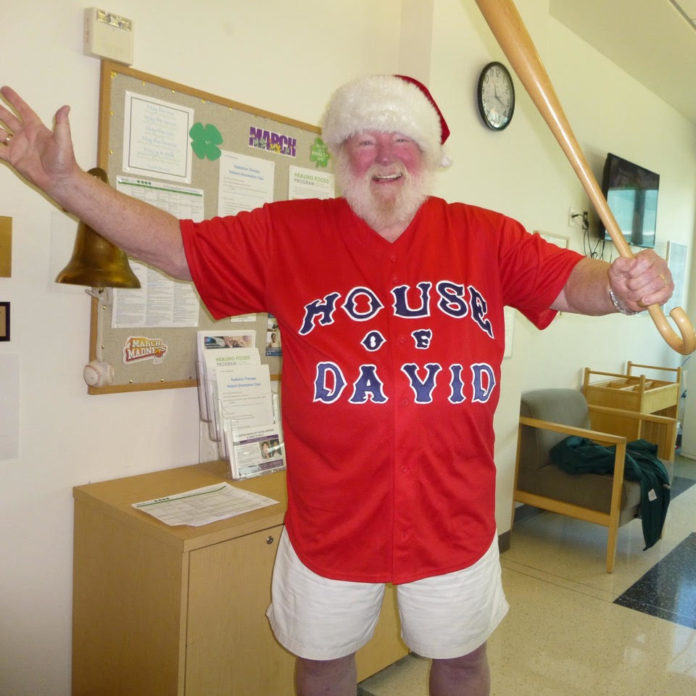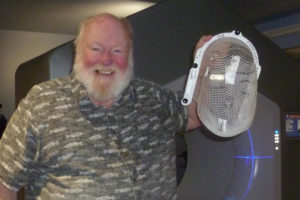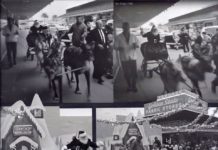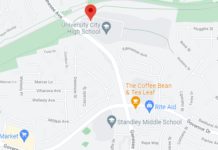
The “C” word is very scary.
It is difficult to accept or even say out loud when it applies to you.
I didn’t want to talk about it.
Former Notre Dame football coach Lou Holtz offered this pithy advice: “Never tell your problems to anyone… 20% don’t care and the other 80% are glad you have them.”
In November 2019, a “punch biopsy” from my forehead revealed a “malignant spindle cell sarcoma.”
Spindle cell sarcoma, also known as malignant fibrous histiocytoma, is an “extremely rare and aggressive form” of cancer. Diagnosis is difficult because, “the tumor may be relatively advanced before symptoms are reported or confirmed.” There are only 500 such sarcomas of the head and neck diagnosed each year.
Prognosis after early detection is “positive.” However, if the tumor is stage 2 or 3, the cancer has likely spread to other locations and “prognosis is grim….” and grim ain’t good.
My tumor was excised the same day the cancer was discovered. I expressed surprise about the size of the chunk removed from my head. My surgeon, Dr. David Mullin, quipped, “This isn’t Dermatology.” Eleven staples were required to close the 2-inch opening.
I was instructed to allow the incision to remain exposed for three weeks. I didn’t wear a cap during that time and my wife quickly grew tired of strangers asking if she hit me over then head with a frying pan.
Know-it-all cancer experts were not shy about offering their unsolicited advice for skin cancer treatment plans. I didn’t feel any need to explain malignant fibrous histiocytoma to these bores.
A subsequent CT scan revealed the cancer had not spread to my neck, chest or lymphatic system. The best e-mail came a few days later from Dr. Mullin: “No concerning findings on your PET scan which is awesome news!”
Prior to a PET scan, a radioactive glucose solution is injected into the blood stream. Tumors consume up to thirty times more sugar than normal tissue which make tumors clearly visible. Images obtained in the scans “help pinpoint abnormal metabolic activity.” The PET scan is used to detect cancer and to determine if it has spread.
It appears my cancer was caught early.
A second surgery was performed in December 2019 to widen “the resection margins.” Margins are surrounding healthy tissue that are removed as a precaution to ensure all cancer is gone.
A skin graft from my neck was discussed, but my old forehead proved to be “elastic.” Thirteen staples closed the 2-1/2”x1” football shaped incision. Once again, I looked like Frankenstein.
From this experience, I learned that face lifts aren’t fun. Our skin doesn’t like to be stretched to its limit.

I had never heard of the Southern California Tumor Board. You learn about these things when you have a rare cancer. My case was referred to the UCSD Moores Cancer Center (MCC) which is “the only National Cancer Institute-designated Comprehensive Cancer Center in the region.”
The first visit to MCC was to have a thermoplastic mask molded to fit my head. The mask attaches to the treatment table and holds the head in position.
With construction of the trolley, congestion in the Golden Triangle can be problematic. A nurse confided that the traffic would probably be the worst part of the treatment.
My six-week radiation program began on January 21, 2020. I was assigned to Varian Halcyon, their newest and fastest linear accelerator. 72 patients a day receive radiation from this machine. It is a highly efficient and professional “assembly line” procedure.
After the first treatment, my wife was anxious to know how it felt. I was in and out in 10 minutes. The patient doesn’t “feel” anything during the entire program.
During the treatments, I saw many patients in the lobby who appeared to have much more serious cancer than I do. Tears came to my eyes when a father pushed his teenaged girl in a wheelchair. It is so painful to see kids with cancer.
After the third week, my forehead felt warm and showed signs of “burning.” Hair began to fall from my bald head. The effects of radiation had begun.
After four weeks, my forehead became flakey. Silverdene cream was prescribed. I thought it would provide relief, but it stings. It is used to destroy bacteria that can cause infection while serious burns are healing.
I distinctly remember Friday of the fifth week. I hadn’t felt that bad since the day early in radiation when I fell and fractured my rib in a parking lot which complicated the remainder of my treatment program.
My oncologist explained that radiation ensures that cancer doesn’t spread through the nervous system. My forehead is numb and cracked. Will the feeling ever come back?
Nausea became a factor. Vernor’s Ginger Ale helped settle my stomach, but in the process, I’ve turned into an old man.
The sixth week was a blur of misery and discomfort. Surprisingly, my forehead began to heal and feeling was already returning.
Knowing my final treatment was approaching boosted my spirits. Patients ring a bronze ship’s bell in the lobby after completion of treatment. I decided to do something a little different when ringing the bell.
I hollowed a baseball to attach to the rope that hangs from the clapper. Then “Baseball Santa” swung his Louisville Slugger bat cane at the ball and rang the bell.
30 innings of radiation were finally over!
I had been looking forward to the final treatment, but the doctor warned discomfort would continue for a few weeks until the radiation left my system.
He was right. Fatigue had knocked me out. One night, I slept over 12 hours. Some of the burn blisters were slow to heal and my eyes remained puffy.
Two weeks after the final treatment, I was feeling like myself again. The last burn blister on my right temple was almost healed. I looked forward to getting out and back into my routines.
I wrote about my cancer to help others understand what to expect if they undergo radiation treatment. Now this all seems trivial.
A new “C” word has appeared in our collective vocabulary: Coronavirus.
We are living in very, very scary times. My wife and I are under house arrest and hope fellow seniors are heeding the advice of medical experts.
I am thankful for Dr. Mullin at Kaiser Permanente, Dr. Parag Sanghvi and the great radiation team at UCSD Medical Center and my wonderful wife, Jeri, who takes good care of me all the time.
Email:Bill@ClairemontTimes.com
To read additional columns by Bill Swank visit: https://clairemonttimes.com/category/squaremont/



